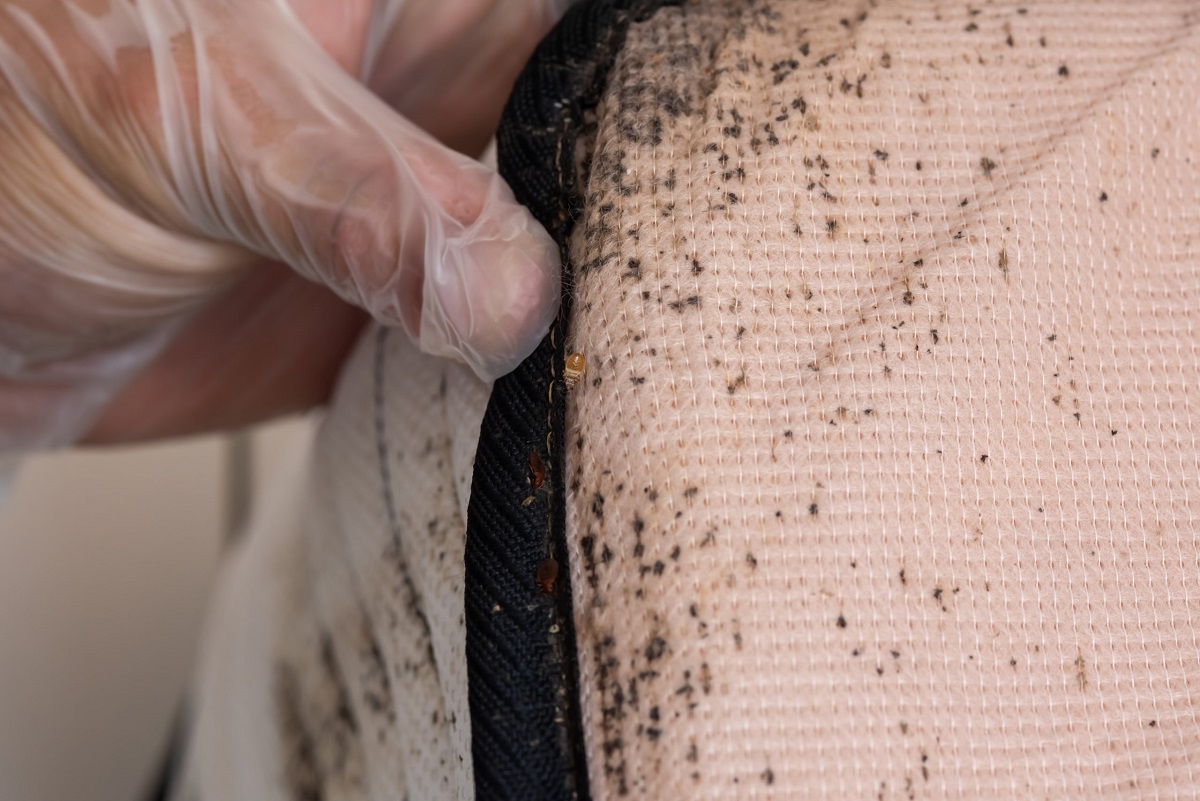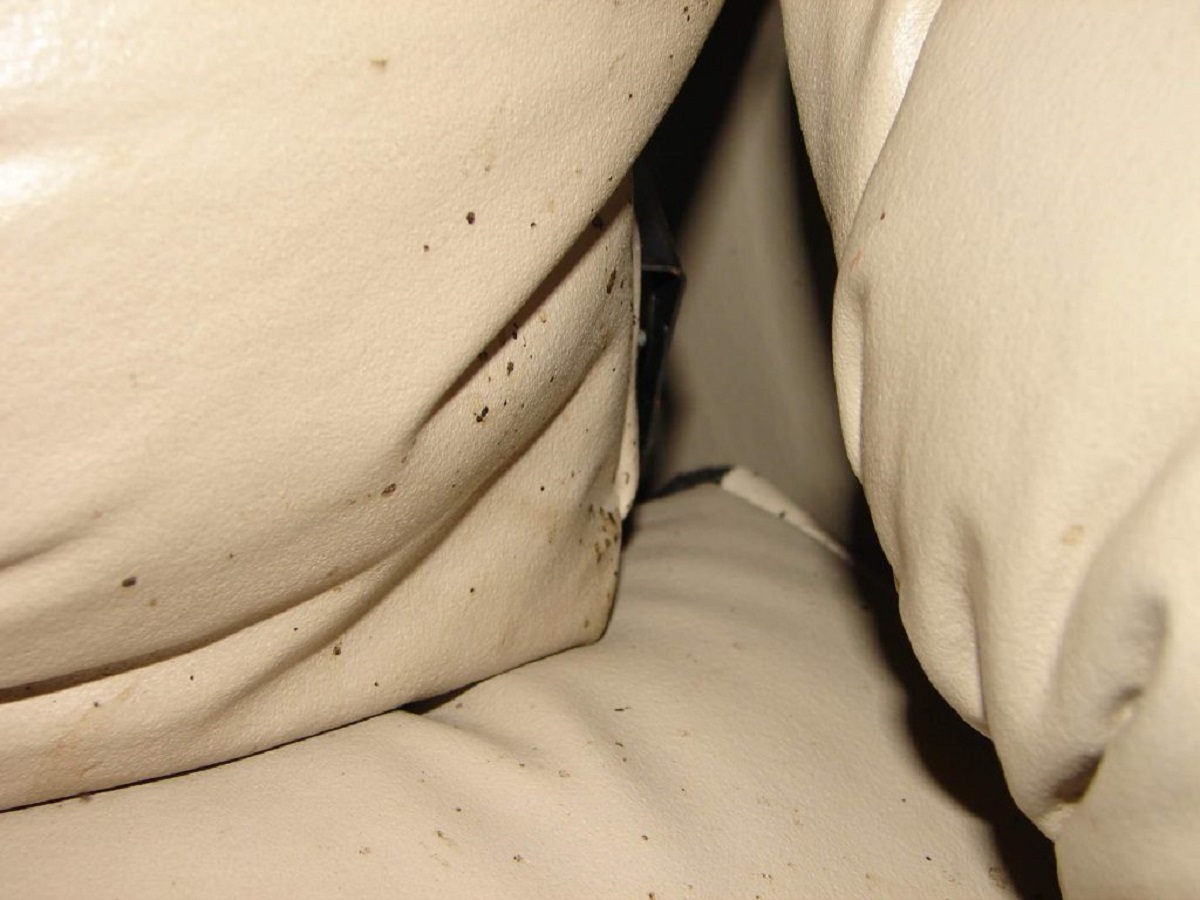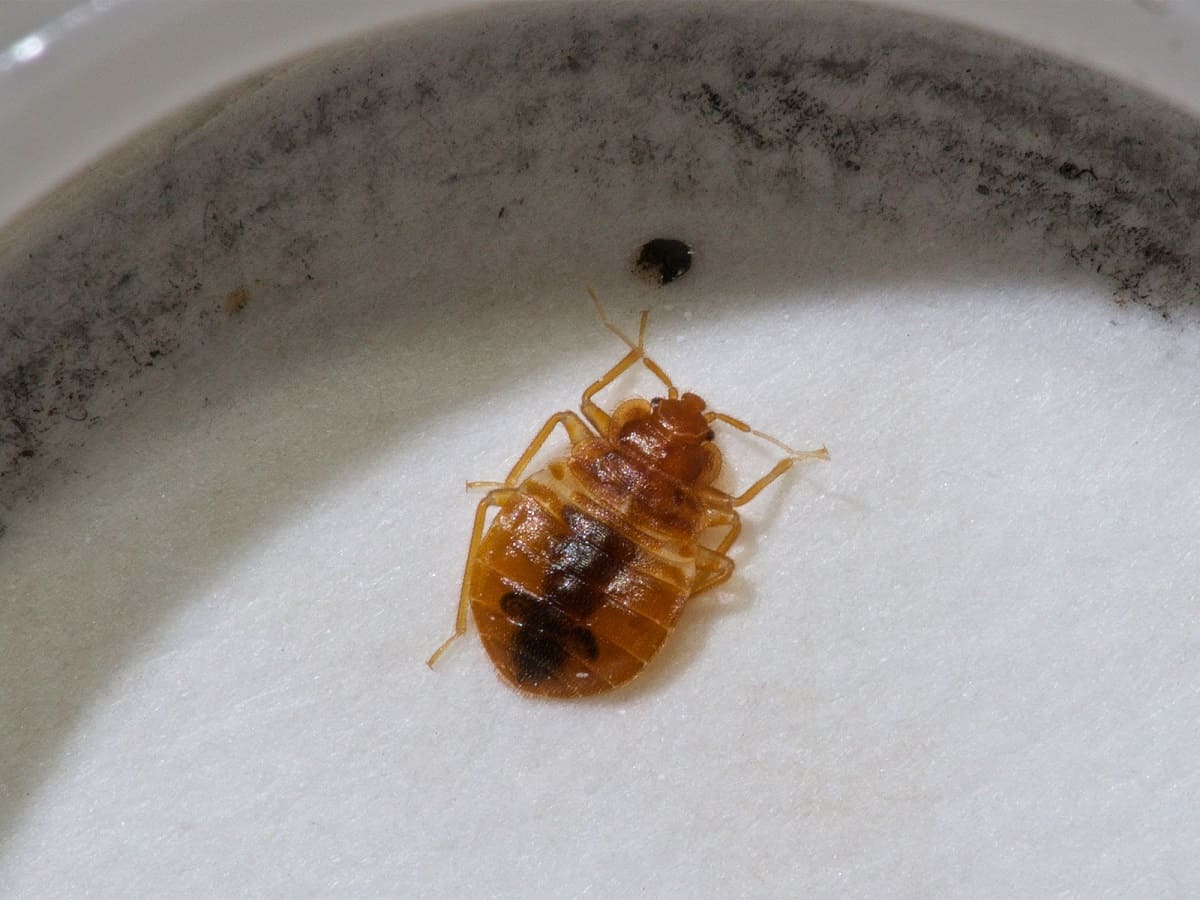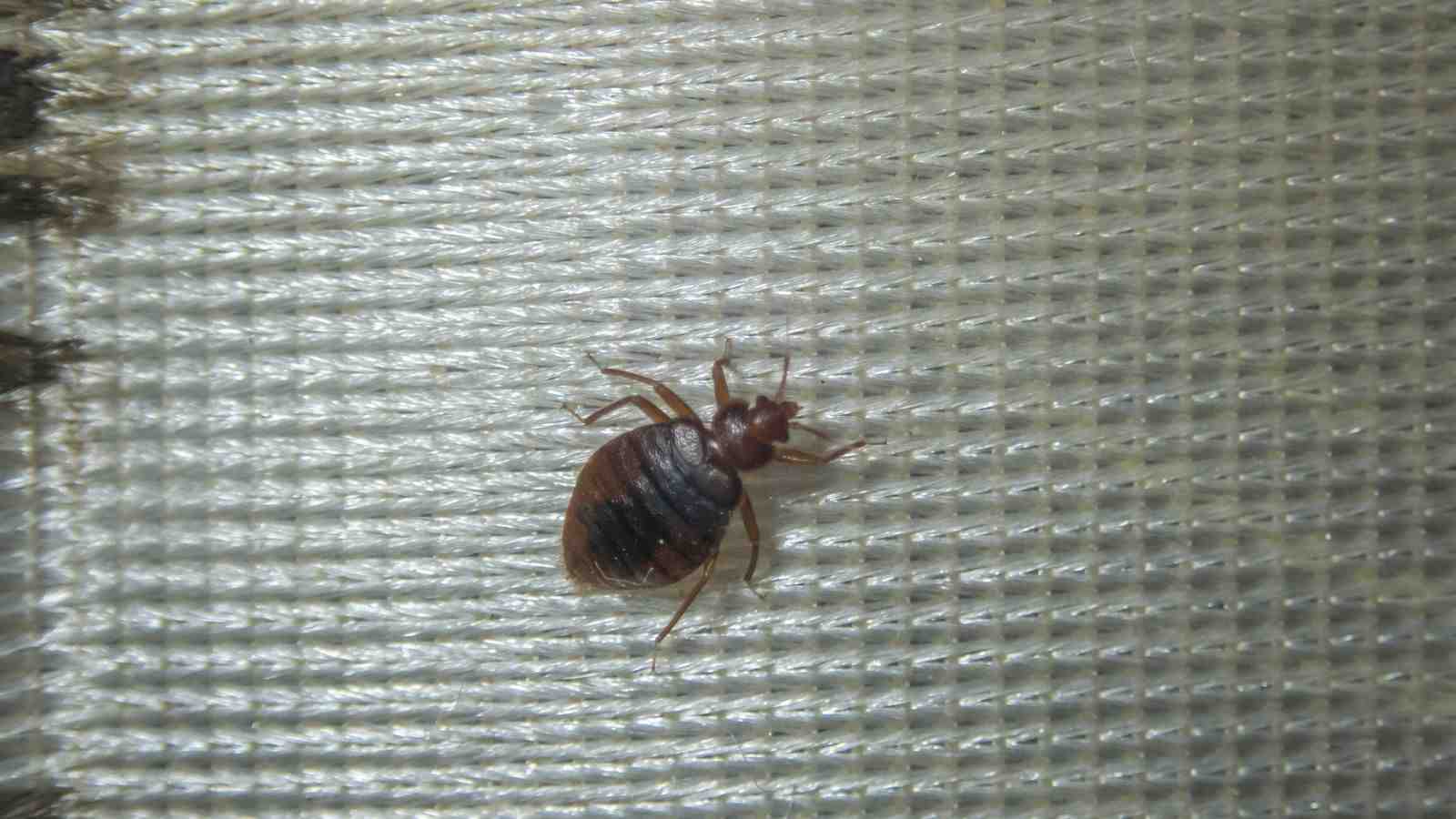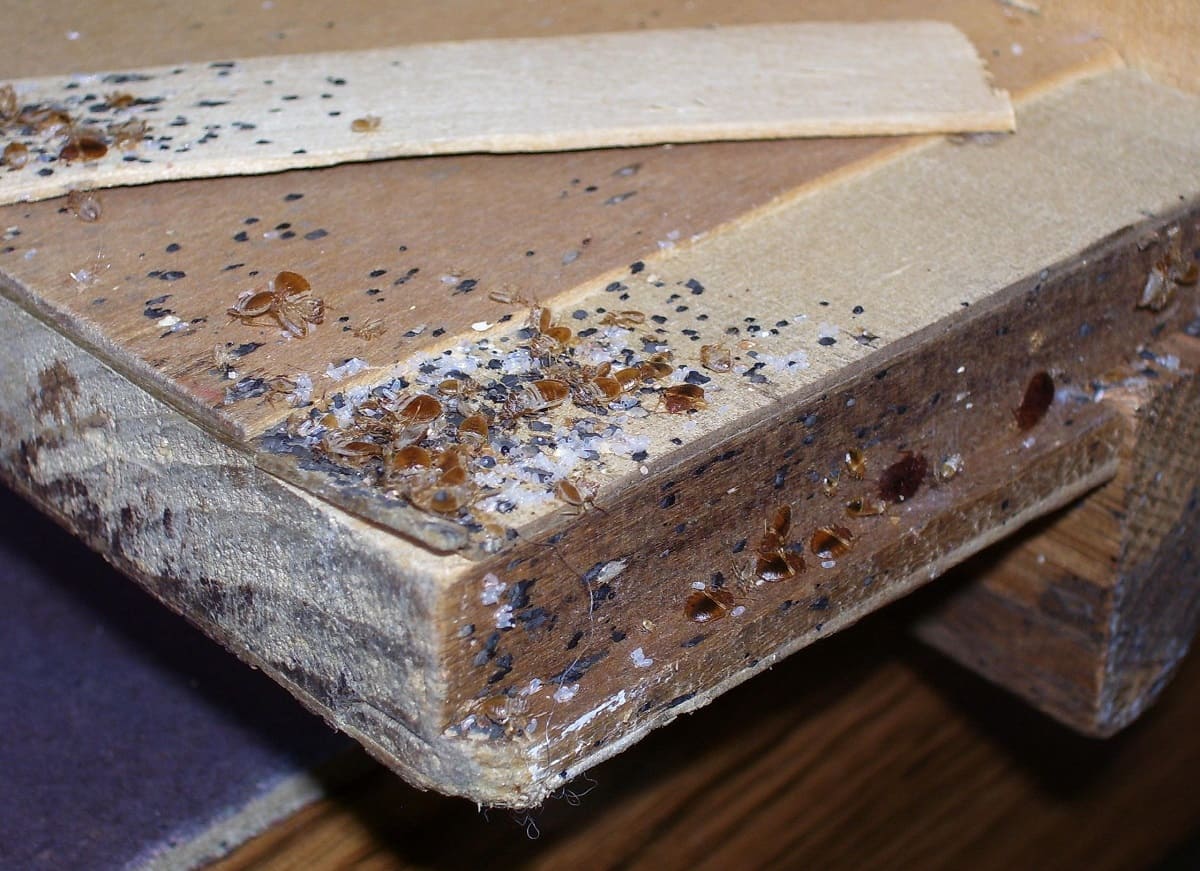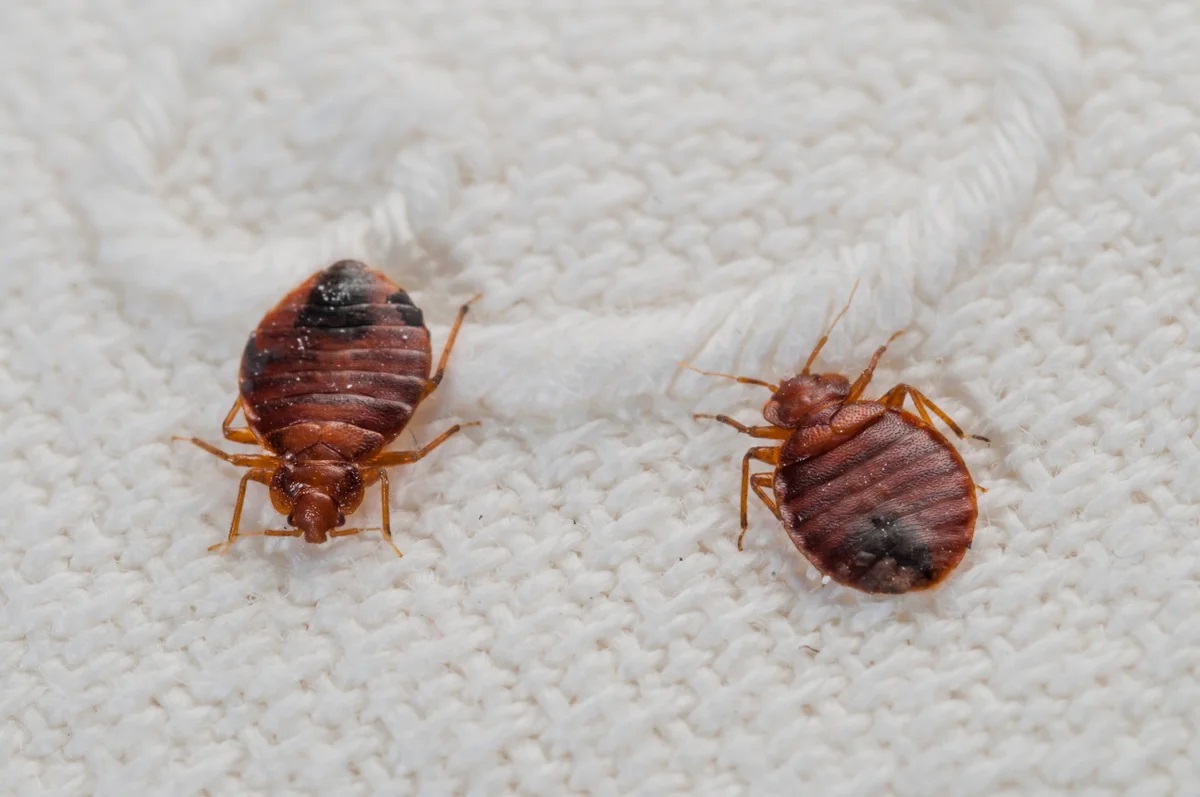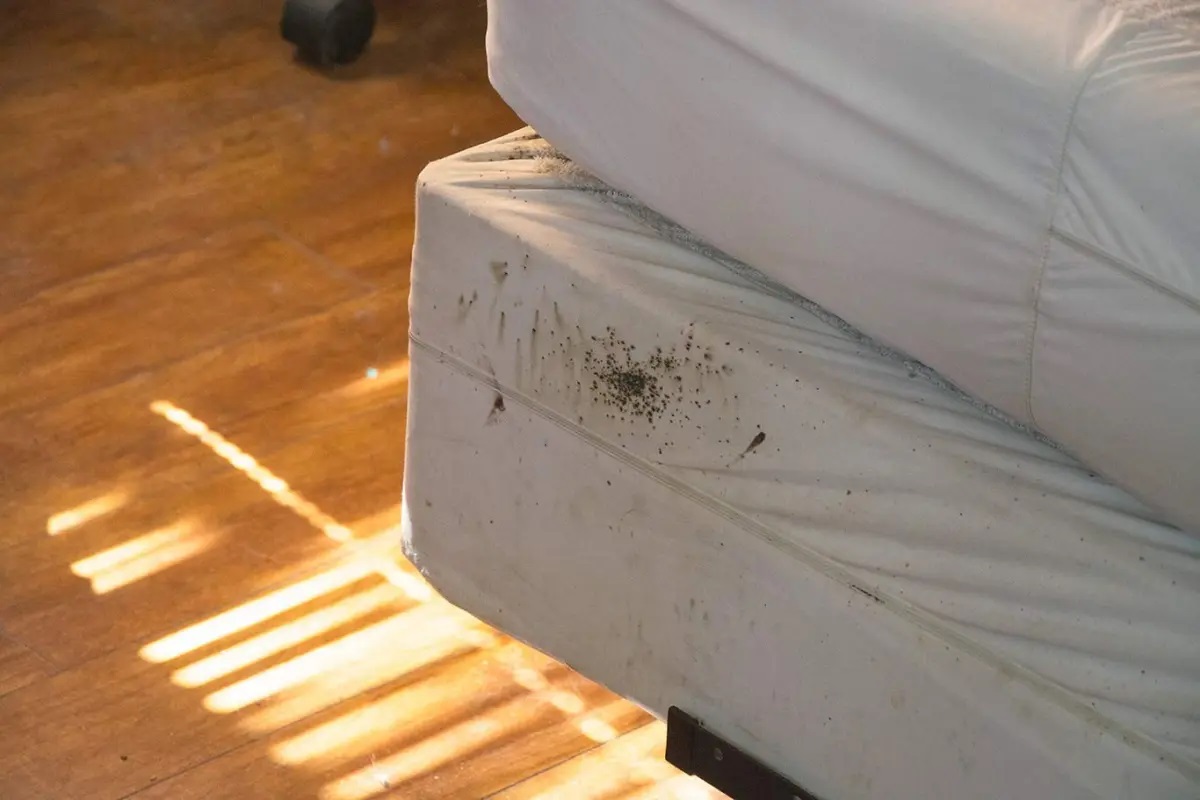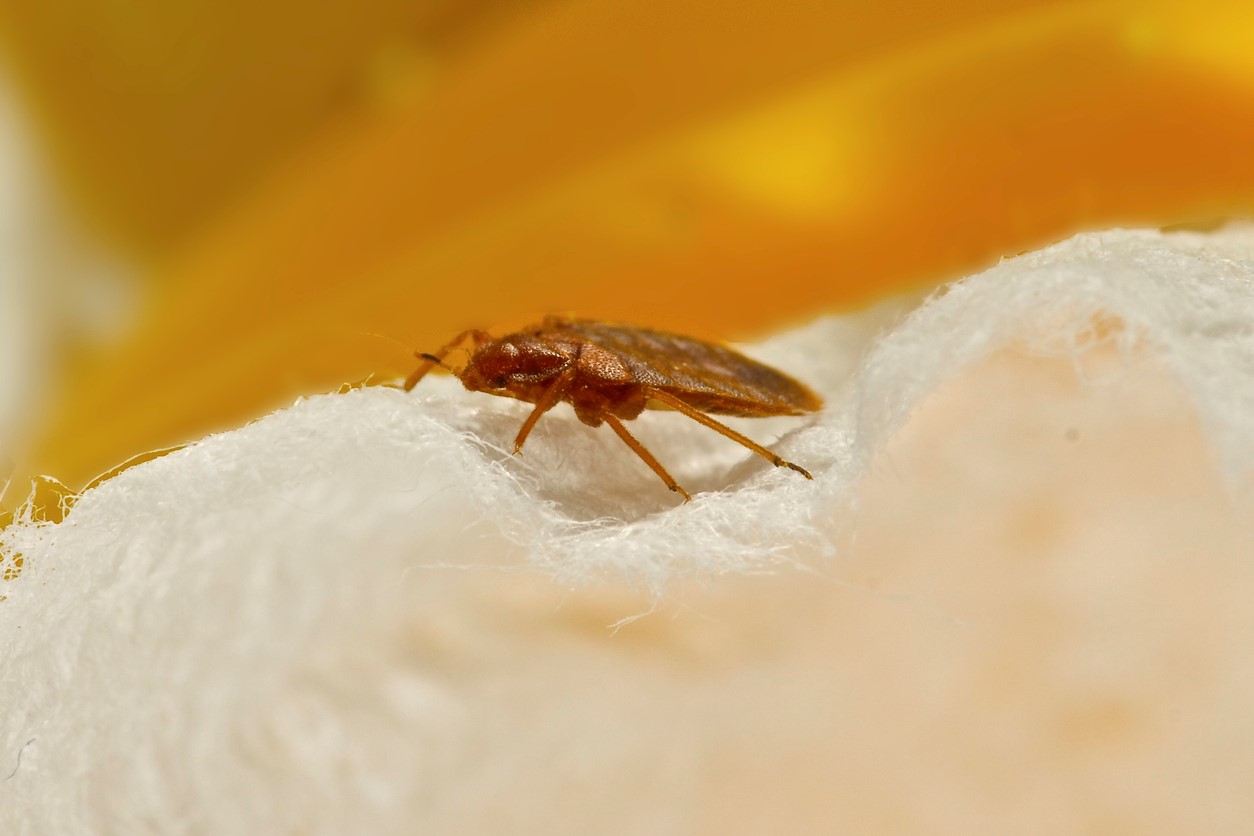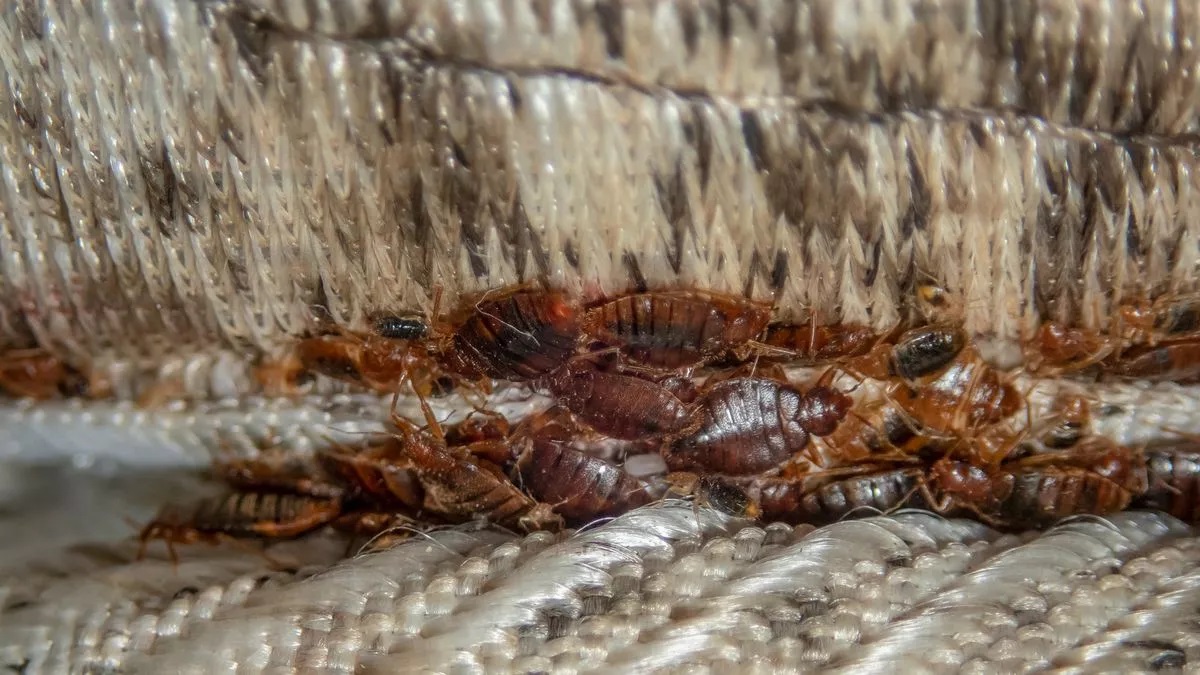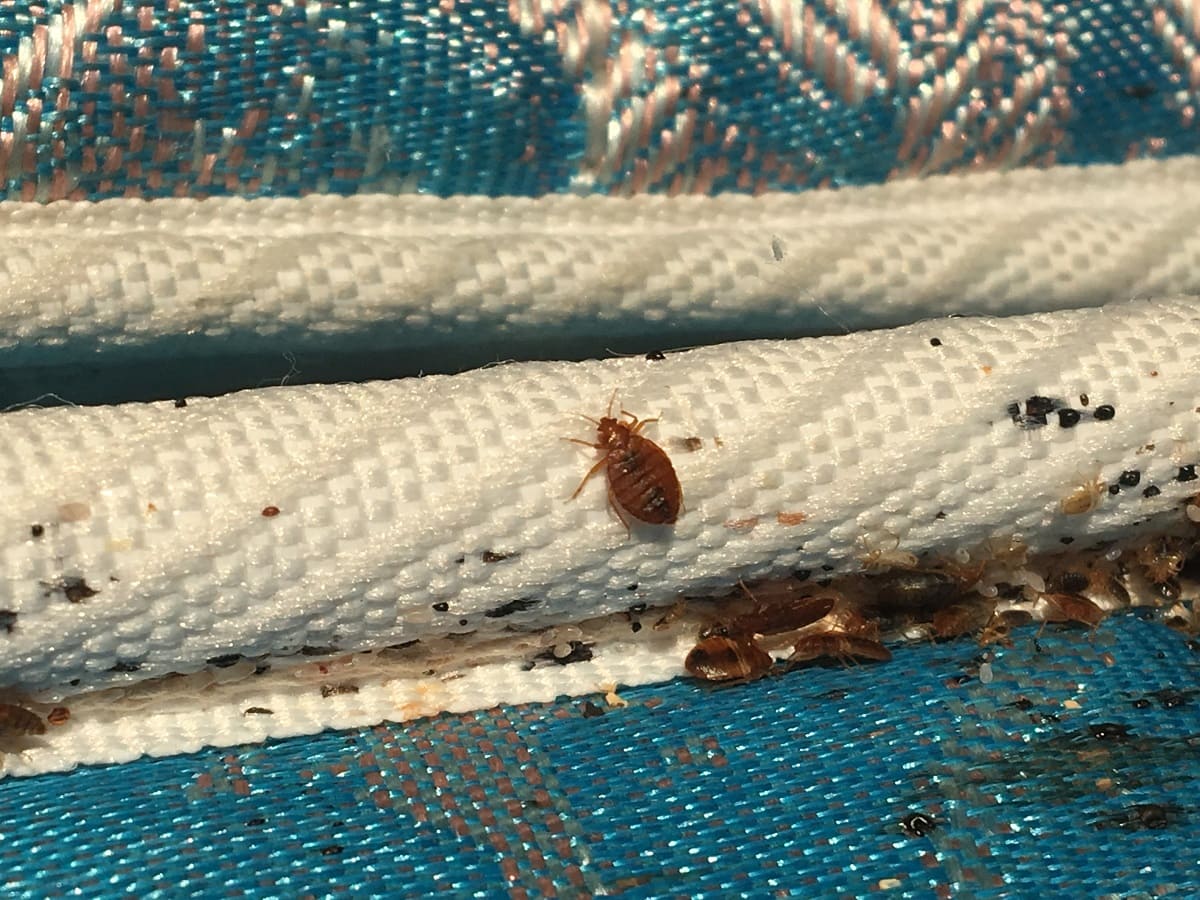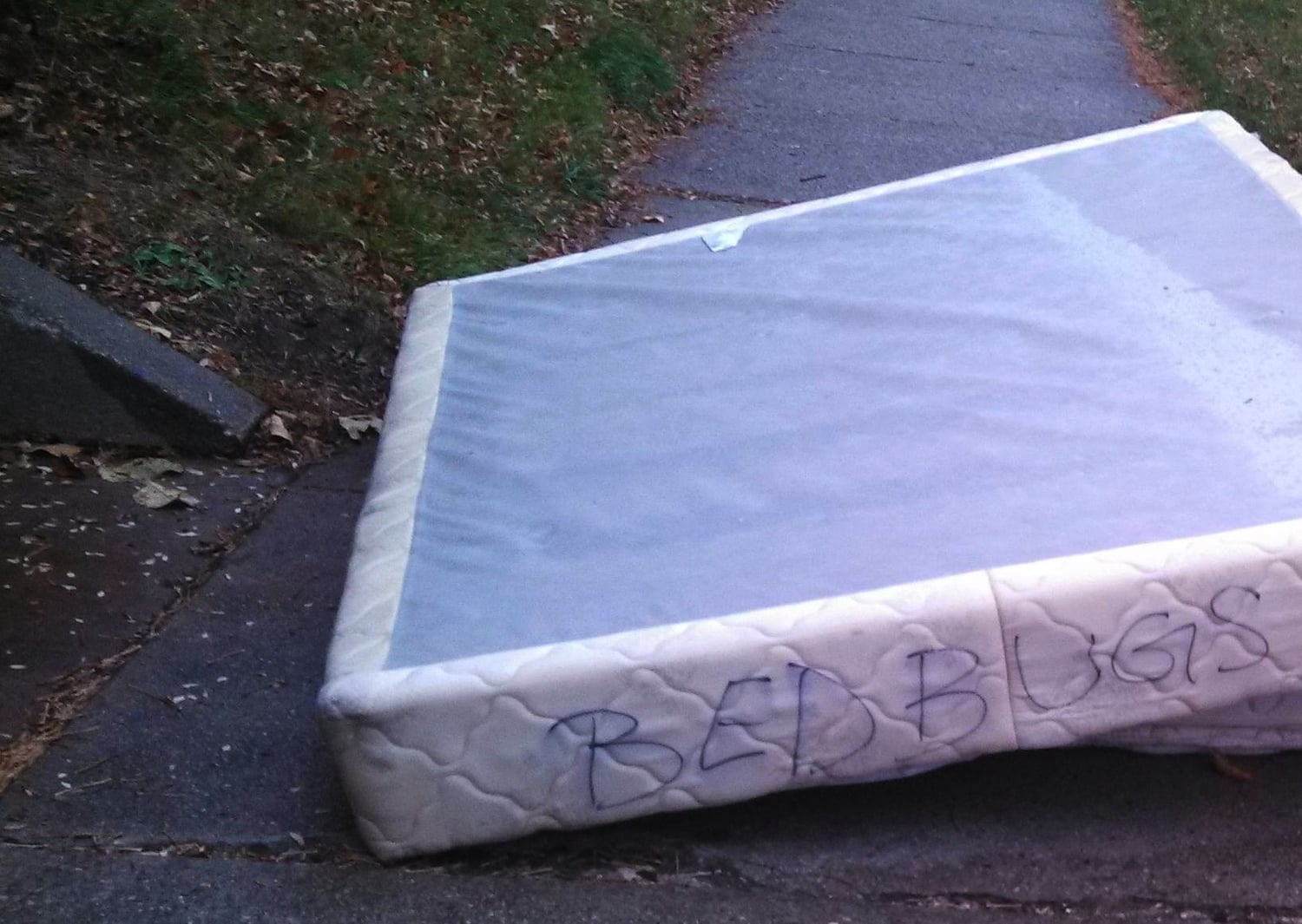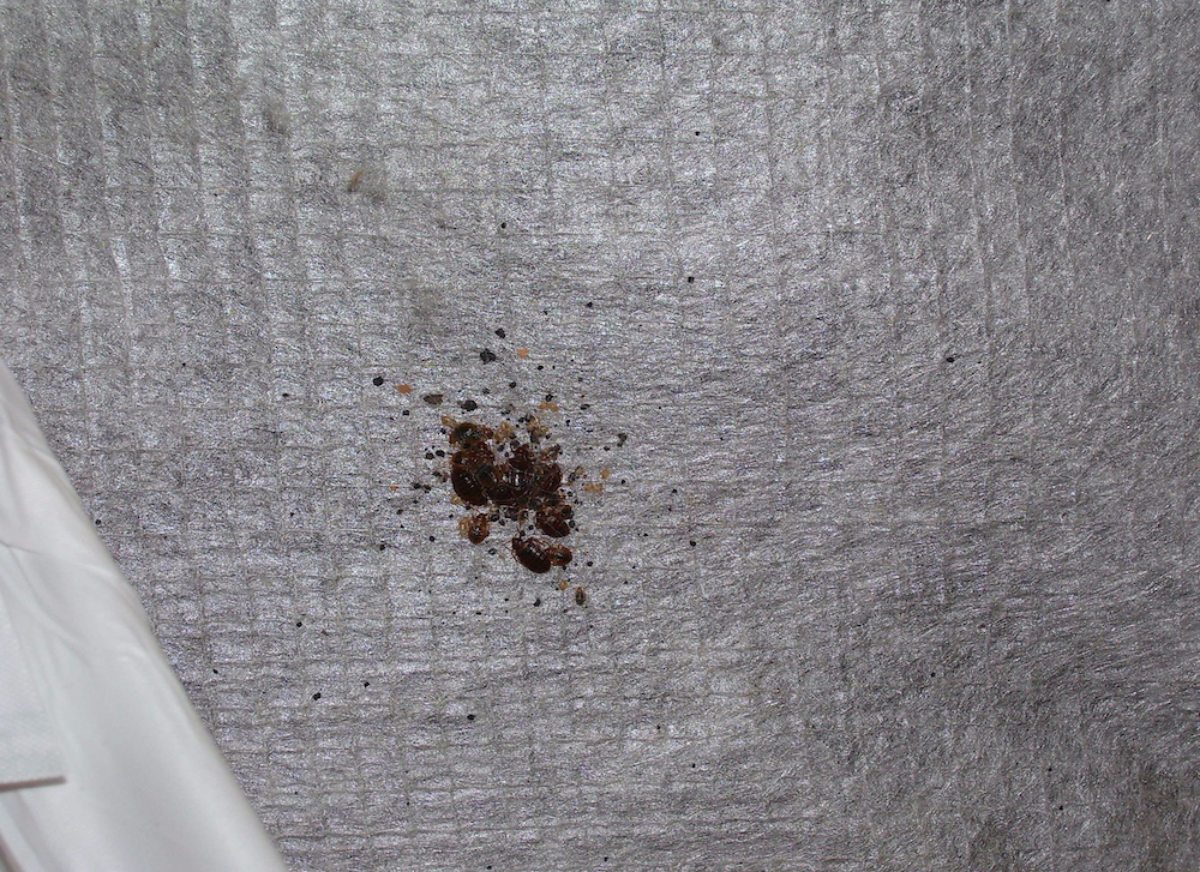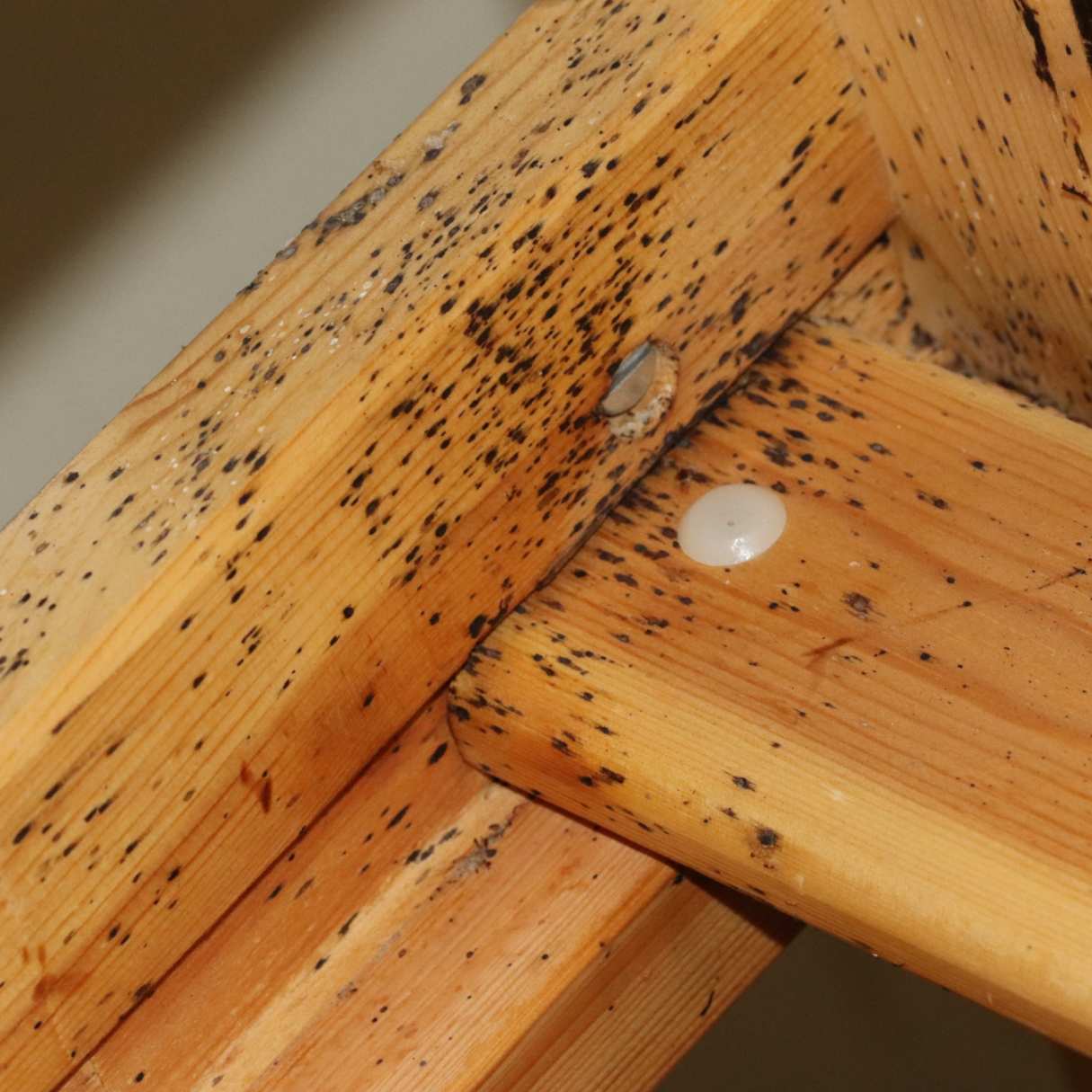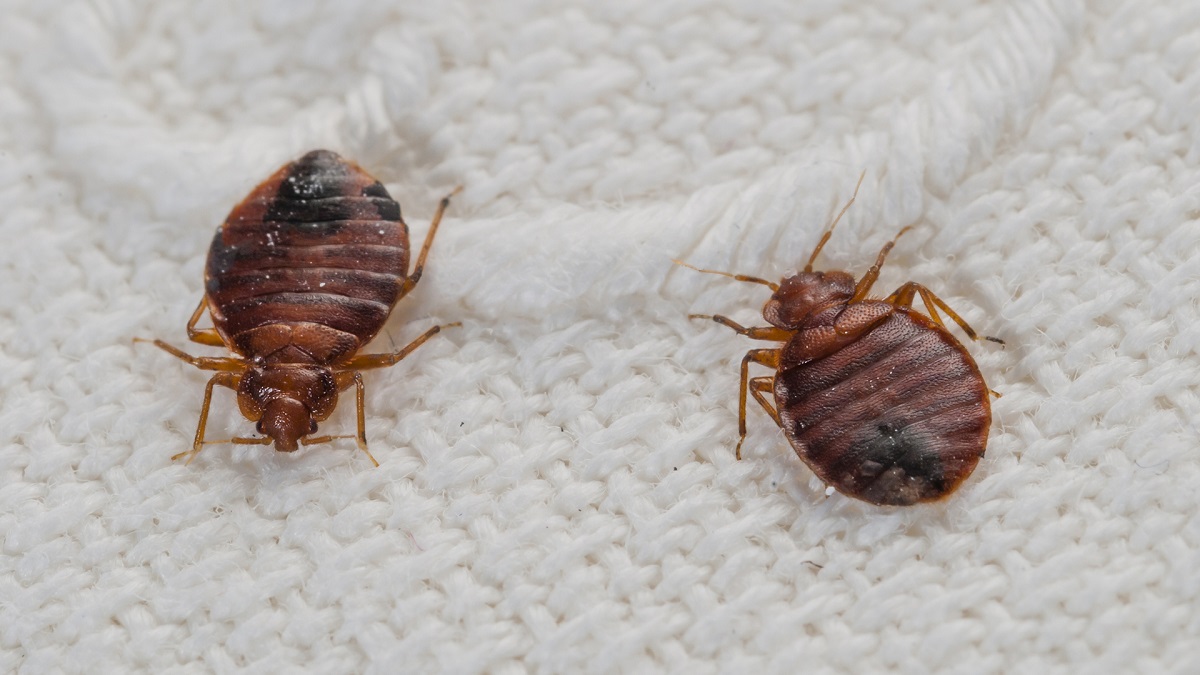Home>Furniture>Bedroom Furniture>How To Check For Bed Bugs On A Couch
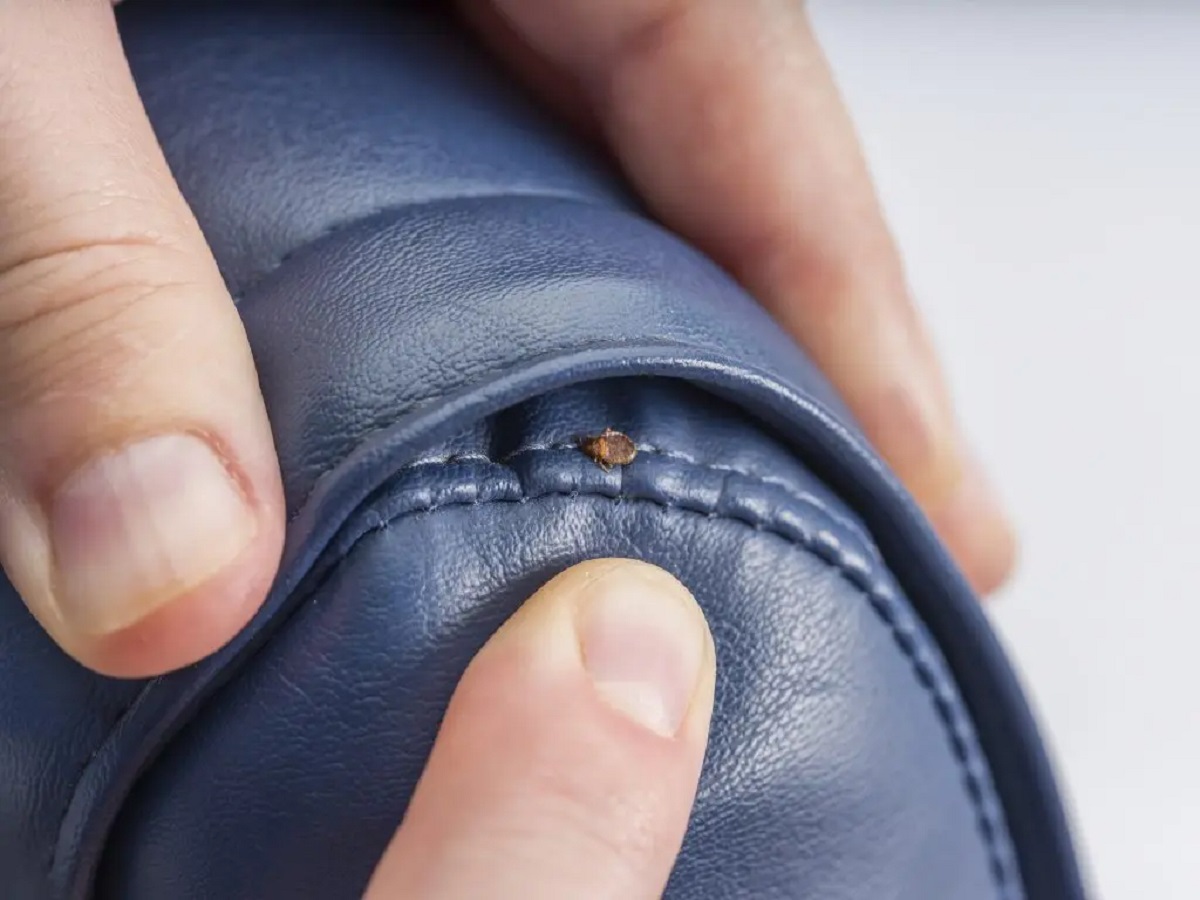

Bedroom Furniture
How To Check For Bed Bugs On A Couch
Modified: September 1, 2024
Learn how to check for bed bugs on your couch and keep your bedroom furniture bug-free. Protect your home from these unwanted pests with our easy guide.
(Many of the links in this article redirect to a specific reviewed product. Your purchase of these products through affiliate links helps to generate commission for Storables.com, at no extra cost. Learn more)
Introduction
Welcome to the comprehensive guide on how to check for bed bugs on a couch. Bed bugs are pesky creatures that can infest not only your bed but also any upholstered furniture in your home, including couches. These small, flat, reddish-brown insects are notorious for their ability to hide in hard-to-reach places, making it challenging to detect their presence. However, with the right techniques and thorough inspection, you can uncover any potential bed bug infestation on your couch.
Bed bugs are not just a nuisance; they can also cause itchy bites and allergic reactions. Therefore, early detection is crucial to prevent a small infestation from turning into a full-blown invasion. By regularly checking your couch and knowing what signs to look for, you can take immediate action and ensure the comfort and safety of your home.
In this article, we will take you through a step-by-step process on how to check for bed bugs on a couch. From preparation to inspection techniques, we will cover everything you need to know to keep your couch bed bug-free. So, let’s dive in and learn how to protect yourself from these unwanted intruders!
Key Takeaways:
- Don’t overlook your couch – regular inspections and vigilance can help detect and address potential bed bug infestations early, ensuring a comfortable and pest-free living environment.
- Utilize preparation, visual inspection, and monitoring techniques to effectively check for bed bugs on your couch, safeguarding your home from potential infestations.
Read more: How To Check Furniture For Bed Bugs
Step 1: Preparation
Before you begin the actual inspection, it is important to prepare the area and yourself to ensure a thorough and effective examination. Here are a few essential steps to follow:
1. Clear the Area: Remove any items, such as pillows, blankets, or clutter, from the couch. This will provide easier access to the different parts of the couch and eliminate any potential hiding spots for bed bugs.
2. Gather Your Supplies: You will need a few items to assist you in the inspection process. Grab a flashlight with a strong beam, a magnifying glass, a pair of gloves, and a plastic bag to store any specimens you may find.
3. Put on Protective Gear: While bed bugs are not known to transmit diseases, it is still a good idea to protect yourself during the inspection. Wear gloves to avoid direct contact with the bugs or any potentially infested areas.
4. Set Up a Well-lit Work Area: Find a well-lit area near the couch where you can comfortably inspect every nook and cranny. Adequate lighting is crucial for spotting tiny bed bugs and their signs.
5. Educate Yourself: Familiarize yourself with what bed bugs and their eggs look like. This will help you identify any potential sightings during the inspection. Look up images and descriptions online to get a clear understanding of their appearance.
By following these preparation steps, you will set yourself up for a successful and productive inspection. Remember, being thorough and meticulous will increase your chances of detecting any bed bug activity on your couch.
Step 2: Visual Inspection
Once you have made the necessary preparations, it’s time to start the visual inspection of your couch for bed bug activity. This step involves carefully examining the surface and structure of the couch to look for any signs of infestation. Here’s what you should do:
1. Examine the Upholstery: Begin by visually inspecting the upholstery of the couch. Look for any signs of small, reddish-brown stains, which may indicate bed bug fecal matter. Pay attention to seams, crevices, and folds in the fabric, as these areas are common hiding spots for bed bugs.
2. Check for Shed Skin: Bed bugs shed their skin as they grow, leaving behind exoskeletons. These are translucent or yellowish and can be found near their hiding places or along the edges of the couch. Look for any signs of shed skin during your inspection.
3. Look for Bloodstains: Another sign of bed bug activity is the presence of bloodstains on the couch. Bed bugs feed on human blood, and if they are crushed or accidentally squashed, they can leave behind bloodstains on the upholstery or cushions of the couch.
4. Check for Musty Odor: Bed bugs release a distinctive musty odor, especially in large infestations. If you notice any unusual smell coming from your couch, it could be a sign of a significant bed bug problem.
5. Inspect the Frame and Cushions: Bed bugs can also hide in the frame and cushions of the couch. Carefully remove the cushions and inspect the seams, zippers, and any crevices in the frame. Look for any signs of bed bug activity, such as fecal stains, shed skin, or live bugs.
6. Take Detailed Notes: As you conduct the visual inspection, make sure to take detailed notes and document any findings. This will help you keep track of the areas you have inspected and any potential signs of bed bugs that you come across.
A visual inspection is the first step in detecting bed bugs on your couch. While it may not always reveal a clear infestation, it is an important starting point in identifying any potential issues. Remember to be thorough and patient during this process, as bed bugs can be excellent at hiding in small cracks and crevices.
Step 3: Use a Flashlight
In addition to a visual inspection, using a flashlight can significantly enhance your ability to detect bed bugs on your couch. Bed bugs are nocturnal creatures and tend to hide in dark, hard-to-reach areas during the day. By utilizing a flashlight, you can shed light on their hiding spots, making it easier to spot any signs of infestation. Here’s how to effectively use a flashlight during your inspection:
1. Choose a Powerful Flashlight: Opt for a flashlight with a strong beam that can illuminate even the darkest corners of your couch. LED flashlights are a great choice due to their brightness and long battery life.
2. Start with the Upholstery: Use the flashlight to thoroughly inspect the upholstery of the couch. Shine the light over every inch of the fabric, paying close attention to seams, crevices, and folds. Look for any movement, as bed bugs may scuttle away when exposed to light.
3. Check the Frame and Cushions: Direct the flashlight beam at the frame and inside the cushions of the couch. Carefully inspect the seams, zippers, and any cracks or crevices where bed bugs may hide. Move the cushions to expose hidden areas and shine the light into those spaces.
4. Rotate the Furniture: If possible, rotate or lift the couch to access the underside. Bed bugs often conceal themselves in the underside of furniture, so be sure to thoroughly examine this area with the flashlight. Look for any signs of bed bug activity, such as their fecal stains or shed skin.
5. Take Your Time: It’s important to conduct a slow and methodical examination with the flashlight. Bed bugs are excellent at hiding, so take your time to thoroughly search every possible hiding spot. Move the flashlight slowly, inspecting even the tiniest cracks and crevices.
6. Use a Magnifying Glass: For a closer look, combine the flashlight with a magnifying glass. This will help you spot any small bed bugs, eggs, or fecal stains that may be difficult to see with the naked eye.
By using a flashlight, you increase your chances of detecting any bed bug activity on your couch. The combination of light and magnification helps reveal their presence, ensuring a more accurate inspection. Remember to be patient, thorough, and observant as you shine the light and continue the examination process.
Step 4: Check Seams and Crevices
While conducting a visual inspection with a flashlight, it is crucial to pay special attention to the seams and crevices of your couch. These areas are favorite hiding spots for bed bugs due to their narrow and protected nature. Checking the seams and crevices thoroughly will help you uncover any signs of bed bug infestation. Here’s how to effectively inspect these areas:
1. Examine Seams: Carefully inspect the seams of the upholstery and cushions. Use your fingers to run along the seams, feeling for any irregularities or small bumps. Bed bugs often hide within the seams, seeking shelter and protection.
2. Look for Eggs: Bed bug eggs are small, whitish, and oval-shaped. They are usually around 1mm in length and may be laid singly or in clusters. Pay close attention to the seams, as these are common areas where bed bug eggs are deposited.
3. Check Crevices: Use the flashlight to visually inspect any crevices or cracks in the couch. Bed bugs can squeeze themselves into extremely narrow spaces. Look for any signs of bed bugs, such as live insects, fecal stains, or shed skin.
4. Inspect Zippers: Zippers can be a convenient entry point for bed bugs. Carefully examine the zipper seams and surrounding fabric, as this is a common area for bed bugs to hide. Look for any signs of bed bug activity or trapped bugs.
5. Use a Credit Card or Thin Object: To reach deep into narrow crevices, you can use a credit card or any thin object. Gently slide the card or object into the crevice, running it along the surfaces to dislodge any hidden bed bugs or their eggs.
6. Vacuum Crevices: After inspecting the seams and crevices, use a vacuum cleaner with a brush attachment to remove any bed bugs or eggs that may be hiding. This will help eliminate any potential infestation and prevent the reinfestation of your couch.
Checking the seams and crevices thoroughly is essential in detecting bed bugs on your couch. These tiny insects can fit into the smallest of spaces, so inspecting these areas diligently will increase the chances of finding any signs of infestation. Remember to take your time and be thorough as you examine each seam and crevice of your couch.
Use a flashlight and a credit card to check for bed bugs on a couch. Look for live bugs, shed skins, and dark spots in the seams and crevices. Vacuum and steam clean regularly to prevent infestations.
Read more: How To Check For Bed Bugs In A Hotel
Step 5: Look for Live Bugs or Eggs
One of the most definitive signs of a bed bug infestation on your couch is the presence of live bugs or eggs. While conducting your inspection, be on the lookout for these indicators to confirm the presence of bed bugs. Here are some key steps to follow:
1. Know What to Look For: Familiarize yourself with the appearance of bed bugs and their eggs. Adult bed bugs are around 4-5mm in length, reddish-brown in color, and have a flat, oval-shaped body. Bed bug eggs are small, whitish, and oval-shaped.
2. Use the Flashlight: Shine the flashlight on the upholstery, cushions, and other areas of the couch where bed bugs may be hiding. Look for any live bugs crawling around or stationary in one spot. Bed bugs are elusive, so be patient and thorough in your search.
3. Inspect the Seams and Crevices: Pay close attention to the seams and crevices of the couch, where bed bugs tend to hide. Look for any signs of live bugs or eggs within these areas. Remember to use a magnifying glass for a closer examination if needed.
4. Check Behind Buttons and Decorative Details: Bed bugs can also hide behind buttons or decorative details on your couch. Gently lift or move these elements to see if any bed bugs or eggs are lurking beneath.
5. Confirm with Movement: Watch for any movement among the bugs you find. Bed bugs are active at night and prefer to hide during the day. If you spot any bugs scurrying away when exposed to light or disturbance, it confirms their presence.
6. Look for Egg Clusters: Bed bugs lay their eggs in clusters. If you come across a small grouping of tiny, white eggs, it is a clear sign of a bed bug infestation. Take note of their location to aid in further treatment and prevention efforts.
If you discover live bed bugs or eggs during your inspection, it is crucial to take immediate action. Consult with professional pest control services to develop an effective plan to eradicate the infestation and prevent it from spreading further.
Remember, thoroughness and attention to detail are key when looking for live bugs or eggs on your couch. By staying vigilant and using the proper tools, you can identify the presence of bed bugs and take the necessary steps to address the infestation promptly.
Step 6: Check for Fecal Stains
Another important step in checking for bed bugs on your couch is to look for fecal stains. Bed bugs leave behind dark, reddish-brown fecal matter as they feed on human blood. These stains can often be found on the upholstery, cushions, and other surfaces of the couch. Here’s how to effectively check for fecal stains:
1. Examine Upholstery and Cushions: Carefully inspect the fabric of the couch, paying close attention to the seams, corners, and edges. Look for any small, dark stains that resemble ink droplets or markers. These may be a sign of bed bug fecal matter.
2. Use a White Cloth or Paper Towel: Dampen a white cloth or paper towel with a mild detergent solution or rubbing alcohol. Gently dab at any suspected stains, being careful not to spread the stain further. If the stain smears onto the cloth and appears reddish-brown, it could be bed bug fecal matter.
3. Look for Clusters or Trails: Bed bug fecal stains may not be isolated spots but may appear as clusters or trails along the fabric. Check for patterns or lines of dark stains, indicating the movement of bed bugs across the couch.
4. Differentiate from Other Stains: It’s important to distinguish bed bug fecal stains from other types of stains, such as food or beverage spills. Bed bug stains are usually dark in color, whereas food stains may have a different shade or consistency.
5. Document the Location of Stains: As you find fecal stains, make a note of their locations. This will help you determine the extent and distribution of the infestation, which can be useful for subsequent treatment or professional pest control assistance.
6. Monitor for Fresh Stains: Keep an eye on the couch for any fresh or recent fecal stains. Bed bugs are active at night, so if you notice new stains in the morning, it could indicate ongoing infestation. Regular monitoring is essential for early detection and prompt action.
By checking for fecal stains, you can gather evidence of bed bug activity on your couch. These stains serve as a crucial clue in identifying and confirming the presence of an infestation. If you find any fecal stains, it is recommended to seek professional help to eliminate the bed bugs completely.
Step 7: Monitor for Bites or Allergic Reactions
While conducting an inspection for bed bugs on your couch, it’s important to also monitor yourself and other occupants of the household for bites or allergic reactions. Bed bug bites can cause itching, redness, and discomfort, and some individuals may also experience allergic reactions. Here’s how to effectively monitor for bites or allergic reactions:
1. Keep an Eye on Your Skin: Regularly check your skin, especially exposed areas such as arms, legs, neck, and face, for any signs of bites. Look for small, red, itchy welts that may appear in a cluster or a line, which is often indicative of bed bug bites.
2. Observe Allergic Reactions: Some individuals may be allergic to bed bug bites, resulting in more severe reactions such as swelling, blistering, or intense itching. If you notice any unusual or excessive reactions, seek medical assistance promptly.
3. Document the Occurrence of Bites: If you or other household members experience bites, document the date, location, and severity of the bites. This information can help in determining the frequency and intensity of the bed bug activity in your home.
4. Differentiate from Other Types of Bites: It’s important to distinguish bed bug bites from other insect bites or skin conditions. Consult a healthcare professional if you are unsure about the cause of the bites or if they persist for an extended period.
5. Consider Other Factors: Keep in mind that not everyone reacts to bed bug bites in the same way. Some individuals may not have any noticeable reaction, while others may have severe symptoms. Therefore, monitoring for bites alone may not be a definitive confirmation of a bed bug infestation.
6. Consult a Pest Control Professional: If you experience recurring bites or suspect a bed bug problem, it is advisable to contact a professional pest control service. They can conduct a thorough inspection and provide appropriate treatments to eliminate the infestation.
Monitoring for bites or allergic reactions is an essential part of being vigilant about potential bed bug infestations on your couch. By staying aware and documenting any bite occurrences, you can gather additional evidence to confirm the presence of bed bugs and take necessary actions to address the issue.
Conclusion
Checking for bed bugs on your couch is a crucial step in maintaining a clean and comfortable living environment. These pests can quickly infest upholstered furniture, including couches, and cause discomfort, allergic reactions, and sleepless nights. By following the steps outlined in this comprehensive guide, you can effectively inspect your couch for bed bug activity and take appropriate measures to address any infestations:
- Prepare the area and gather the necessary supplies for a thorough inspection.
- Conduct a visual inspection, paying close attention to upholstery, seams, and crevices.
- Utilize a flashlight to illuminate hidden areas and increase visibility.
- Check for live bed bugs, eggs, shed skin, and bloodstains.
- Look for fecal stains, clusters, or trails that indicate bed bug presence.
- Monitor yourself and others for bites or allergic reactions.
Remember that early detection is key when it comes to dealing with bed bugs. Regular inspections, along with vigilant monitoring, can help you spot the signs of infestation before it becomes a larger problem. If you do find evidence of bed bugs on your couch, it’s crucial to take swift action to address the issue.
Consulting a professional pest control service is recommended for effective bed bug treatment. They have the expertise, tools, and knowledge to eliminate bed bugs safely and efficiently. Additionally, they can provide guidance on preventive measures to keep your couch and home free from future infestations.
By following the steps outlined in this guide, you can ensure a thorough inspection of your couch and peace of mind knowing that your living space is bed bug-free. Stay proactive, vigilant, and informed to protect yourself and your home from these unwanted pests.
Ready to tackle more household challenges? If pesky pantry moths are your next target, our guide on effective pest control strategies will ensure your kitchen remains spotless and bug-free. For those keen on keeping their living spaces in top shape, our comprehensive home maintenance checklist offers essential tips and tricks. And for aficionados of stylish décor, learning about furniture care for leather pieces is a must-read to keep your investment looking pristine for years to come.
Frequently Asked Questions about How To Check For Bed Bugs On A Couch
Was this page helpful?
At Storables.com, we guarantee accurate and reliable information. Our content, validated by Expert Board Contributors, is crafted following stringent Editorial Policies. We're committed to providing you with well-researched, expert-backed insights for all your informational needs.
